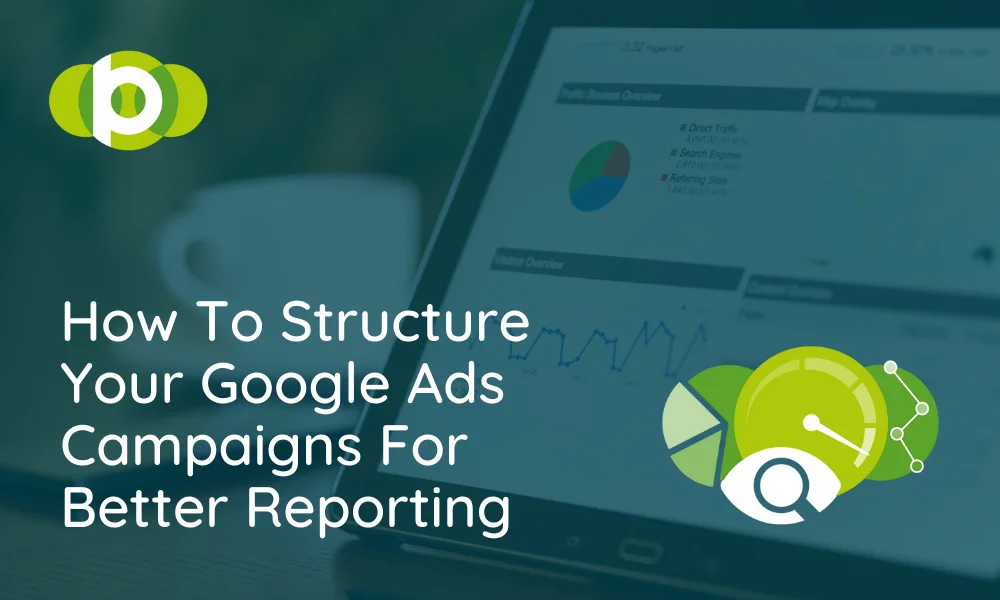No matter whether you work in an agency, multinational company or little high street shop, if you’re running digital marketing campaigns it’s imperative to report on and analyse your performance. Without reporting there is no way you can properly break down your performance and understand how effective your marketing activity has been.
So it’s important you get your reporting right and what better place to start than structuring your Google Ads campaigns from the ground up. If you structure your Google Ads with reporting in mind you can quickly understand data, keep things neat and scale your business with ease.
In this post, we are going to break down our top tips for structuring your accounts and campaigns for the most effective and easiest reporting.
Contents:
Below are all the topics we are going to cover in this post. We’ll work our way through everything from the importance of properly naming your campaigns to how to set them up and structure them:
- The importance of clear naming conventions
- How To Structure Your Campaigns
- Structuring Your Keyword Ad Groups
- Structuring Your Shopping Product Groups
- Structuring Your Display Audiences
The Importance Of Clear Naming Conventions
Before we dive into our top tips for structuring your accounts, it is essential we talk about the importance of using clear naming conventions throughout your account.
So what do we mean by naming conventions? A naming convention is basically what you call your campaign or ad group. They can be words or codes so that you can tell what the ad group has been set up to do.
So for example when you look at a report you should be able to see the keyword’s match type, the type of audience applied, the type of your campaigns and generally what that part of your account is doing.
When creating naming conventions there really are no rules. As long as it is clear, concise and makes sense to you and your team. You can play around with it but the main rule of thumb is to keep it consistent and not to deviate otherwise you’ll do more damage than good. Here is an example of an ad group set up:
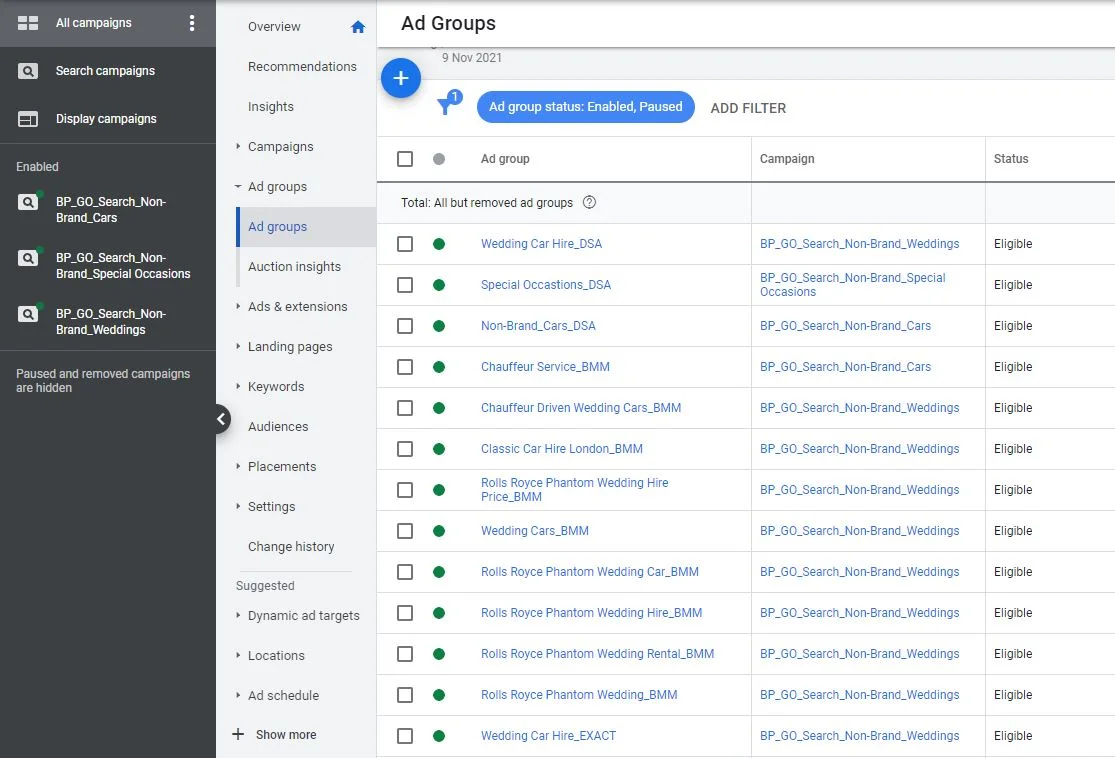
Naming conventions don’t need to be complicated, they just need to make sense to you and your team. By following them you’ll find your reporting becomes more streamlined and opportunities and threats will become easier to spot.
How To Structure Your Campaigns
The first place to start when building out a new Google Ads account is creating your campaigns. But what exactly do you put in them?
Well, there are a few ways you can structure your campaigns and it all depends on your specific goals, market and objectives.
If you’re a business that offers services to customers, it’s worth breaking out your campaigns into the variety of sub-services that you want to push. This way you can apply specific budgets to certain services that you want to push more or less and apply highly relevant, tailored audiences and ads to better target users specific to that offering.
Alternatively, if you are a large e-commerce retailer who sells a variety of different products, breaking your shopping ads out into product type level campaigns makes sense. You can then drill this down further within that specific shopping campaign into separate product groups, but more on that later.
Once again this is also the same across display campaigns. If you are running lots of different display ads for different products or services, it makes sense to separate them out at campaign level. You can use your ad groups to test different audiences or different creatives rather than bundling everything together. This way you can quickly and easily see what’s working, what isn’t, and what areas of your display activity need more work.
The key point to remember is when planning out campaigns you need to understand your goals and objectives. If you want to make different levels of returns across different service offerings then separating your campaigns out by service allows you to monitor and benchmark performance across your entire service proposition.
The temptation to keep all your activity in one campaign and separate it out by ad groups is tempting but worth avoiding. By clearly structuring your campaigns you can better allocate budgets and measure returns across different areas of your business.
Ad Groups, Product Groups, Audiences & Keywords
So you’ve now created your neat, separated campaigns and you’re now ready to create ads and place them into ad groups. But how do you go about structuring your ad groups?
There are many ways you can do this but below are our top recommendations:
- Separate your ad groups by keyword match type (search)
- Separate your ad groups by audiences (display)
- Separate your product groups by product type (shopping)
- Separate your product groups by brand (shopping)
Once again this is all subject to your objectives and what campaigns you are running but you should at least be able to see a pattern.
We often see campaigns with 2 ad groups and hundreds of keywords and different audiences moulded in together, not only is this not best practice and bad for optimisation, but it’s incredibly hard to understand what’s actually working and what isn’t.
When it comes to reporting, you want to make it as painless as possible. You can do this by taking the time to structure your account into separate logical groups that you then apply a clear naming convention to that allows you to quickly identify exactly what that part of the account is doing in your report.
How To Structure Ad Groups For Search
For search campaigns, one of the best ways to structure your ad groups is by match type. For example, if you’re running a search campaign and are targeting 60 keywords with 30 using exact match and 30 using phrase match, you wouldn’t want to group the match types together. You could do this with a separate phrase and exact ad group but we recommend going one step further and breaking your search ad groups down to an individual keyword basis;
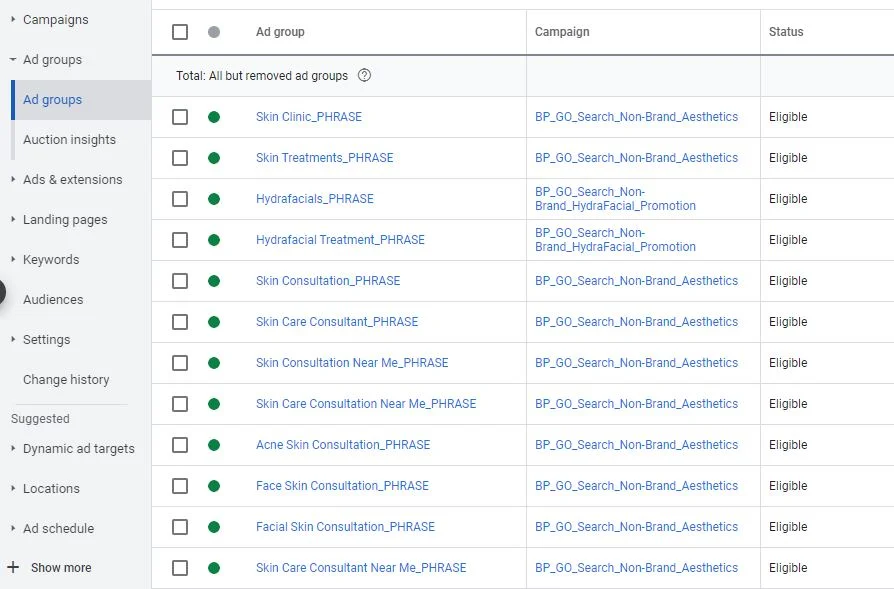
This allows you to tailor ads to specific search terms and better monitor how each keyword and ad copy variation performs over your account. This is especially useful across larger accounts that contain thousands of keywords.
How To Structure Ad Groups For Shopping
Alternatively, if you’re not using search campaigns you can apply these practices to campaign, ad group and product group levels across every campaign type. The best way to create a clear and concise structure is to break out your groups to the most granular point with a clear naming convention applied, like so:
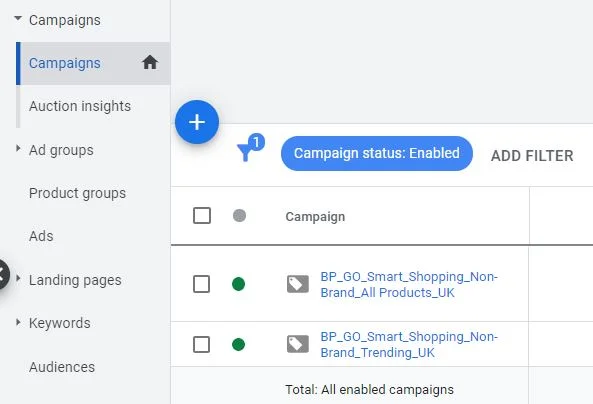
For example, separating your shopping product groups to brand or product type-level allows you to drill down your groups and quickly identify winners and losers in the account and identify opportunities while reporting:
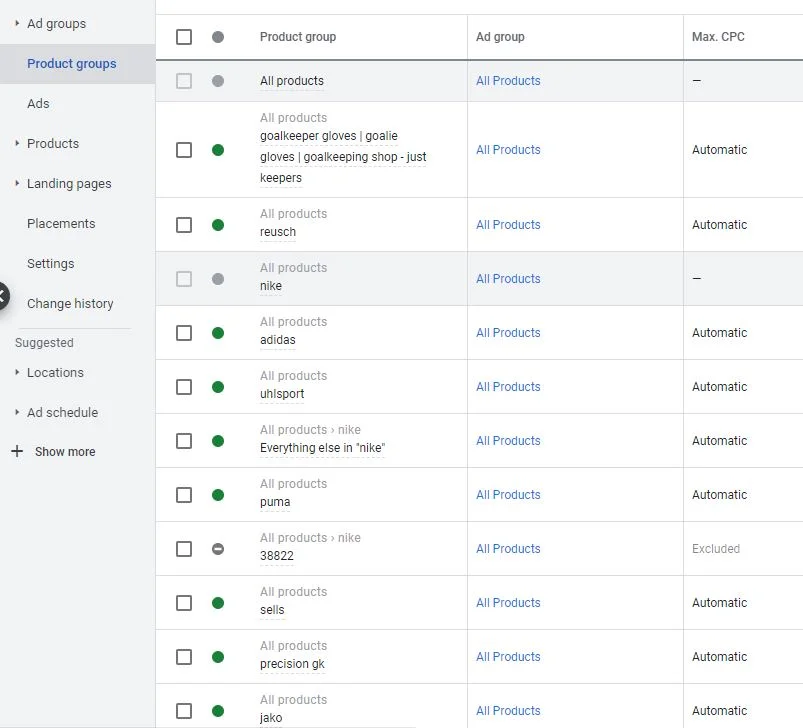
There is no right or wrong way to group your products in smart shopping when it comes to reporting, it’s more of what works for your situation. However, there are some best practices when it comes to the optimisation of your Shopping campaigns. You should aim to keep brands segregated and concise with clear groups for different products that you offer.
You’ll more often than not have a well-structured account that makes it easy for you to report with.
How To Structure Ad Groups For Display
For display audiences we’d recommend breaking your ad groups down to audience level and creating separate groups for each unique audience you’re using to target users across the display network:
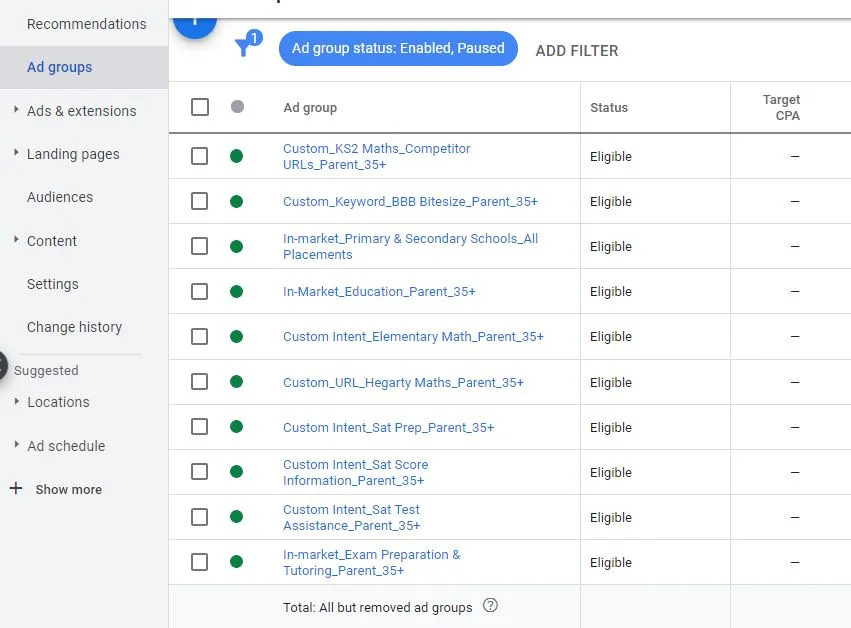
Once again this allows you to quickly see what audiences are applied to specific ads and identify what audience types are performing well and what ones need improving. This is especially useful across display as you can reassess your target customer and make adjustments to your entire strategy based on the data the account provides.
As you can see, there are a variety of ways you can break out your ad groups depending on your goals. But no matter what your goals are, the more granular the ad group the better. This helps you quickly identify any problems and opportunities in your account and report on performance with greater ease.
Conclusion
In summary, there is an awful lot you can do to improve the way you structure your account in order to make reporting easier and more efficient. By making sure that when you are structuring your accounts you are in a better position to:
- Understand your objectives and what you want to achieve from your activity
- Separate your campaigns logically by service or sub-service where necessary so you can make strategic changes to different parts of your business
- Break down your ad groups systematically and really granulate them into logical groups that you can monitor with ease
- Finally, apply clear naming conventions that are fluid throughout the account that allows you to quickly understand what that campaign or ad group are doing and targeting so when you look at your data you know exactly what’s working and exactly what you need to work on.
With this advice in mind, even the most novice of marketers can identify new opportunities, successful initiatives and potential threats within their accounts.

